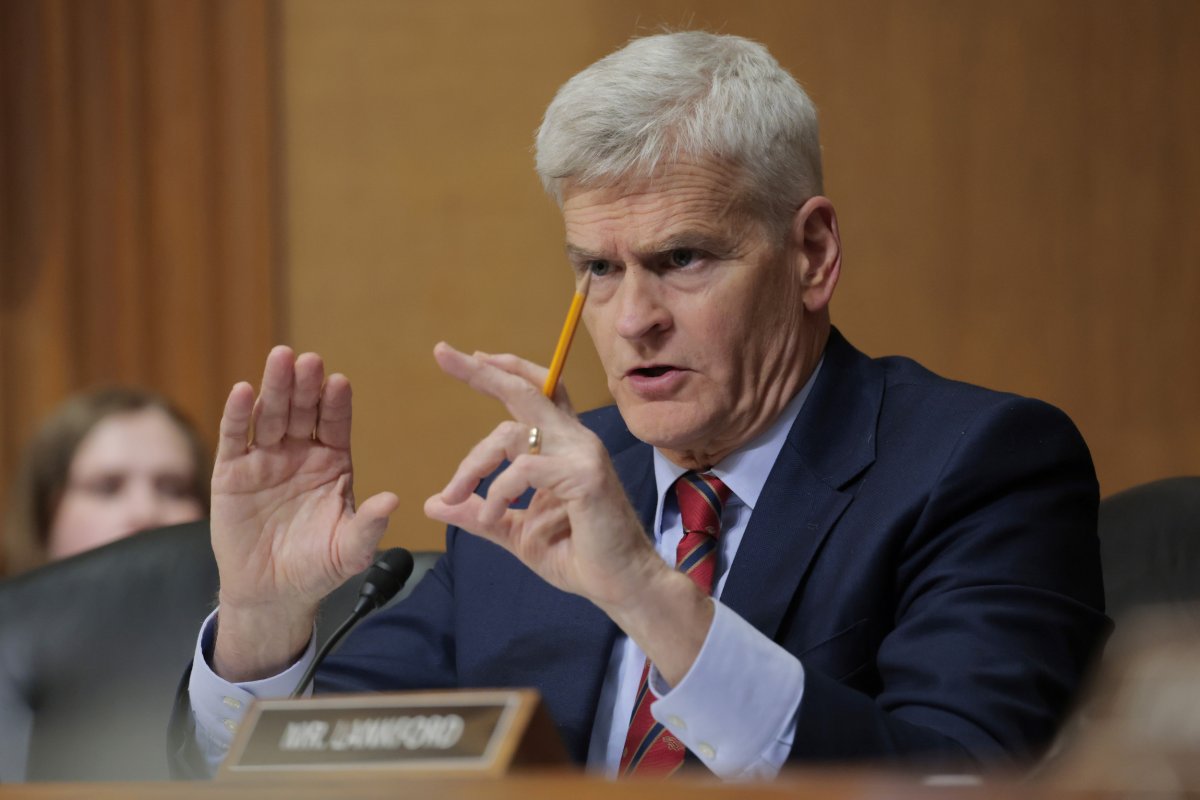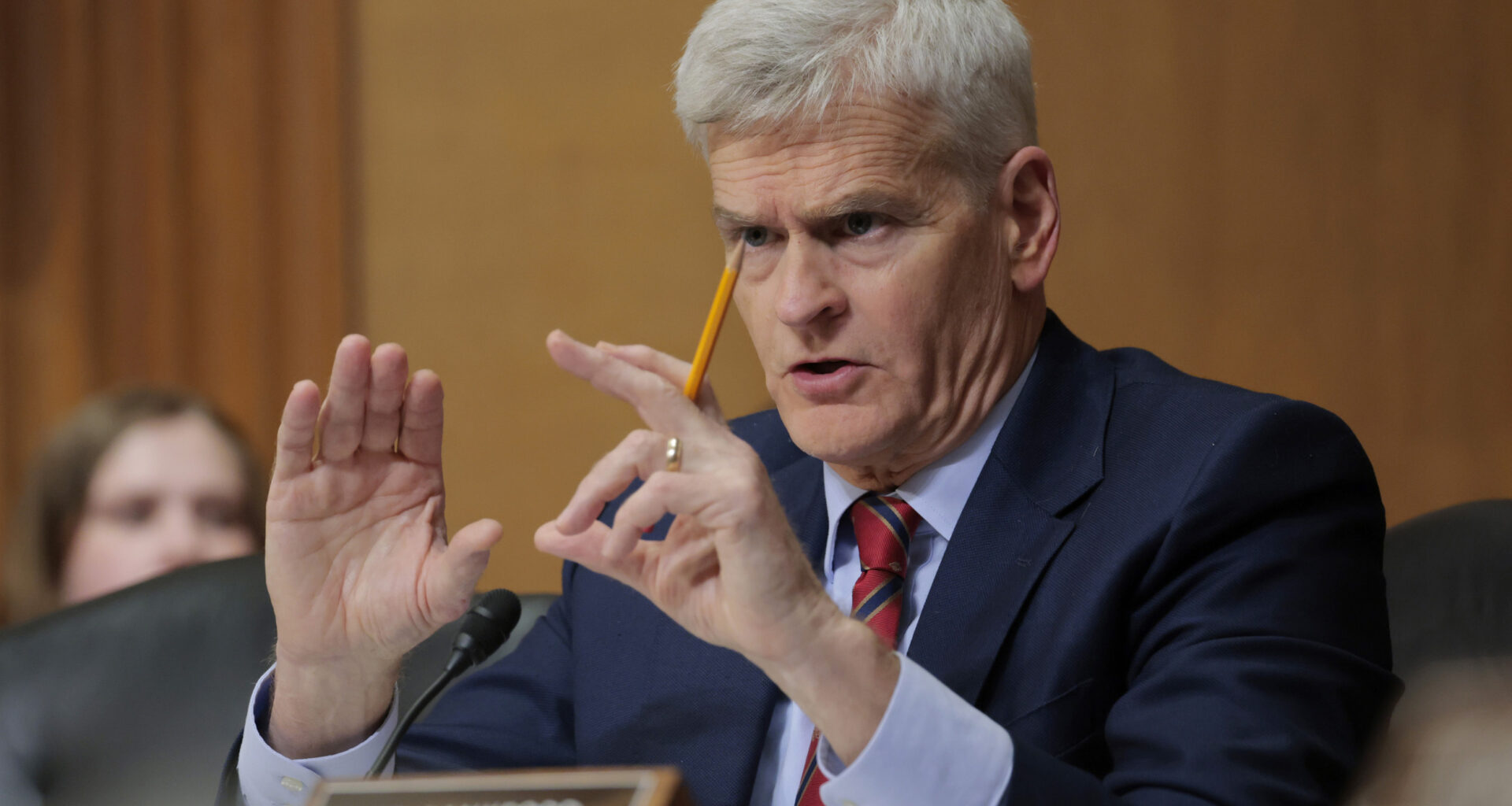Senator Bill Cassidy on Friday proposed significant changes to Social Security to prevent the agency’s impending insolvency.
In an interview on CNBC’s Squawk Box, he said the Social Security fund is currently invested in Treasury bonds, which are low yielding in nature. His new proposal would change that and establish a new fund to ensure that the Social Security Administration doesn’t reach its insolvency date.
“We are losing money on those treasuries right now,” said Cassidy, a Louisiana Republican. “What we propose is a separate fund from the Social Security trust fund, in which we would put $1.5 trillion into it over 10 years, invest it in the U.S. economy, hold it in escrow for 65 to 75 years and then use that return to offset any unfunded accrued liability in the Social Security trust fund.”

Senator Bill Cassidy during a Senate Finance Committee hearing in the Dirksen Senate Office Building on March 14, 2025, in Washington.
Senator Bill Cassidy during a Senate Finance Committee hearing in the Dirksen Senate Office Building on March 14, 2025, in Washington.
Anna Moneymaker/Getty Images
Why It Matters
Currently, the Social Security trust fund, which pays out the retirement benefits owed to Americans for the years they worked in the workforce, funding the agency, is facing a funding crisis.
Treasury estimates that by 2034, the fund will no longer be able to make full payments to beneficiaries, leading to a 23 percent cut in benefits.
Since many retirees depend on Social Security payments for the bulk of their everyday necessities, this could have dire consequences for seniors, pushing many to delay retirement or not be able to retire.
What To Know
During his interview Friday on CNBC, Cassidy stressed the importance of ensuring that the Social Security fund still has enough money for full benefits and said his solution would work no matter the state of the larger economy.
“We modeled this through the Great Financial Crisis, and the Great Financial Crisis, of course it dips down, but within a year, it’s back up to where it was,” Cassidy said. “The power of our economy is so great….Even if it only offsets 60 percent of our unfunded accrued liability, that’s a lot better than we’re doing now.”
The comments came as Cassidy and Democratic Senator Tim Kaine of Virginia introduced bipartisan proposal aiming to address the looming insolvency of Social Security this week. Their plan, announced in a recent op-ed for The Washington Post, would establish a new fund parallel to the existing Social Security Trust Fund, investing in a diversified portfolio including stocks and bonds to achieve higher returns and supplement traditional funding methods.
The proposal would require an initial federal investment of $1.5 trillion and allow the fund a 75-year period to mature before it begins to directly support Social Security payouts. Its goal is to prevent benefit cuts or tax increases for future retirees by creating an additional stream of income to shore up the program’s finances.
The urgency behind such reforms has grown in light of recent trustee reports showing the Social Security Old-Age and Survivors Insurance (OASI) Trust Fund could be depleted by 2034. If no legislative changes are made, beneficiaries could see payments reduced to roughly 77 percent to 81 percent of current rates starting in 2033 or 2034.
The fund has been drying out primarily because of demographic shifts such as lower fertility rates, slower wage growth and increased benefits following policy changes in recent years. Disability Insurance (DI) Trust Funds are projected to remain solvent until at least 2099, but retirees are at risk of having their promised Social Security payments diminished.
Cassidy and Kaine’s new investment approach is intended to mirror successful strategies in existing state and private pension funds, as well as in countries overseas.
Current law restricts the Social Security Trust Fund to investing in low-yield Treasury bonds, limiting growth potential. By comparison, major equity indexes such as the S&P 500 have generated substantially higher returns over comparable timeframes.
Newsweek reached out to Cassidy and Kaine for comment via email.
What People Are Saying
Senators Bill Cassidy and Tim Kaine, in their op-ed for The Washington Post: “There is a nationwide appetite to implement a bipartisan, commonsense plan like ours.”
Alex Beene, a financial literacy instructor for the University of Tennessee at Martin, told Newsweek: “Senator Cassidy’s proposal is not the first of its kind, but it is thinking that Congress desperately needs to head off the coming shortfall in Social Security expected to hit over the next decade. The concept is pretty simple: taking the fund used for Social Security and investing it in a diversified portfolio of stocks, bonds, and other investments, similar to a 401k. Over time, the fund would grow and be able to provide for recipients without extensive tax increases.”
Kevin Thompson, the CEO of 9i Capital Group and the host of the 9innings podcast, told Newsweek: “In theory, it makes sense. But theory needs to be backed by modeling—especially worst-case scenarios. We should compare the potential downside of investing in equities with the worst-case outcome under the current system, where the trust fund is invested in Treasuries.
“Right now, Treasuries are yielding more than they have in years, meaning the risk-free rate of return has increased. So, any shift to riskier assets like equities would need to deliver even higher returns to justify the added risk.”
What Happens Next
While Cassidy and Kaine’s proposal has not been officially submitted for congressional approval, they said waiting to act could lead to “difficult and preventable consequences.”
Beene said past proposals of this nature have faced criticism over the concern that investments don’t always necessarily go up.
“You’re playing with the primary source of retirement income for millions of Americans,” Beene said. “It’s hard to envision this perfectly working or passing unless a case is made that investments would be secure and steady enough to not trigger significant losses to the fund.”
